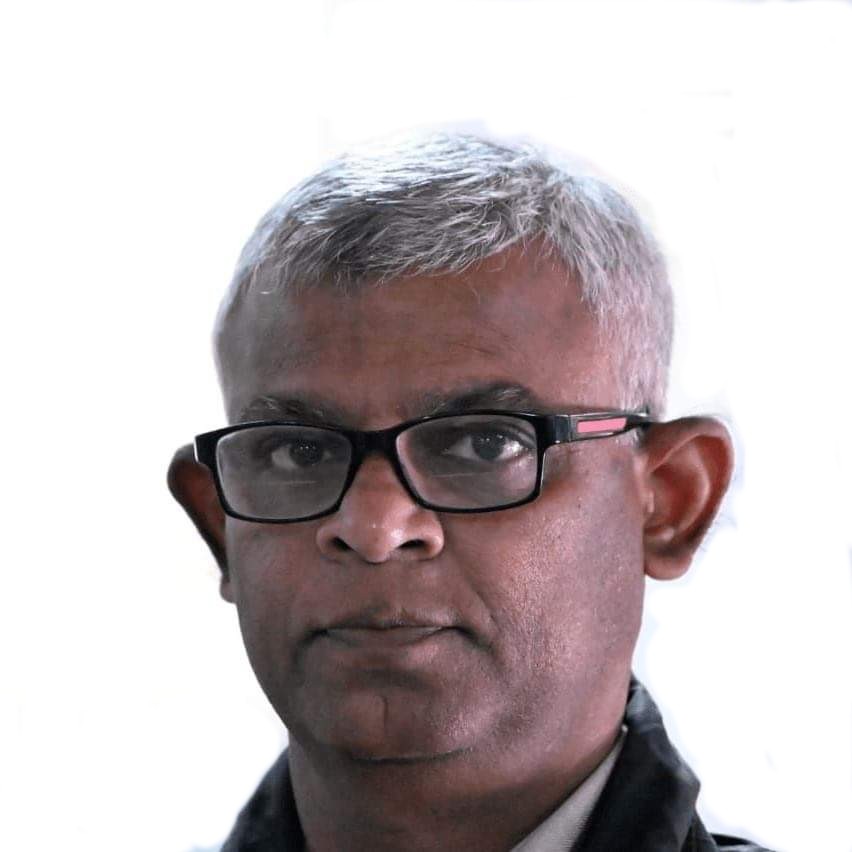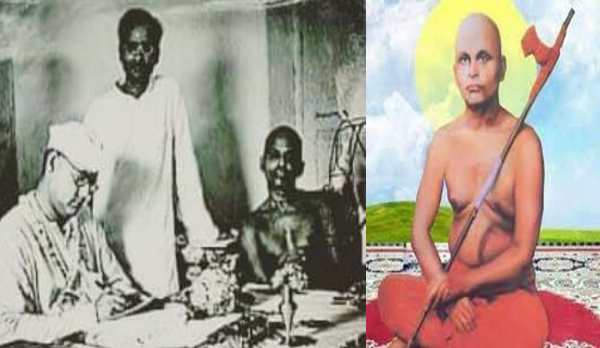On February 22, 1889, when a child was born in the home of Beni Rai, a Jhoothiya Brahmin in the Deva village of Ghazipur district in Uttar Pradesh, no one knew that this son of Beni Rai would not only initiate the farmers’ movement in the country but would also make his invaluable contribution to liberating Mother India from the British yoke

Niraj Krishna
The pioneer of the peasantry movement, Swami Sahajanand Saraswati, once said, ‘He who produces food and clothing will now make laws / This India belongs to them; now they will govern.’ Our leaders seem favorable to farmers only during elections, and they seem very good when they remain peaceful and keep nodding to the rulers. When peasants raise their voice for their rights, they are portrayed as being manipulated by other parties. This game is played by every ruling party. Politics favors the public to such an extent that it first steals their sight and then offers them glasses.
Recognised as one of the principle and significant leaders of the peasantry in Bihar, Swami Sahajanand Saraswati was a brilliant intellectual and a striking master of debate. Gifted with numerous qualities of mass leadership, Sahajanand grew as a social reformer and politician and won a circle of several admirers. However, to his ill-fate, all his contributions towards the freedom movement of India and raising the consciousness of peasants are forgotten today, except amongst a small number of historians and social scientists.
The most attractive and instructive respect that he earned during his life was his intellectual transformation, which makes him distinguished even today, though with a small population. He was a versatile genius, performing several roles during his entire working career, such as linguist, polymath, sociologist, historian, philosopher, writer, grammarian, ascetic, revolutionary, Marxist, and politician.
Today is the anniversary of a saintly ascetic who the whole world recognizes as the god of farmers. We are talking about Swami Sahajanand Saraswati. During the golden era of India’s independence (76 years ago), while the country was undergoing significant changes, Swami Sahajanand dedicated his life to the struggle for the welfare of farmers and freedom from exploitation until his last breath. His condition deteriorated day by day. Today, we find plenty of leaders claiming to be champions of farmers’ interests, but leaders who raise their voices for their rights and privileges are nowhere to be seen. In such a situation, the absence of Swami Sahajanand Saraswati is deeply felt.
On February 22, 1889, when a child was born in the home of Beni Rai, a Jhoothiya Brahmin in the Deva village of Ghazipur district in Uttar Pradesh, no one knew that this son of Beni Rai would not only initiate the farmers’ movement in the country but would also make his invaluable contribution to liberating Mother India from the British yoke. This little boy, who began his education at the Jalalabad Madrasa at the age of just nine, made Adi Guru Shankaracharya his guru and had his name recorded in history with golden letters as Swami Sahajanand Saraswati.
Apart from being a Dandi Sannyasi of the Dasnami Sampradaya and a freedom fighter and nationalist leader of India, Swami Sahajanand Saraswati was also the progenitor of the farmers’ movement in India, an intellectual, author, social reformer, revolutionary, and historian. He was considered the incarnation of the era’s dharma, recognized by the footsteps of time, the precursor and leader of the farmers’ explosion and its synonyms, the proponent of nationalist leftist ideology, a great pundit of Vedanta and Mimamsa, the staunch indigenous version of Marxism, whose words were fire and rebellion in action, a warrior against oppression, and a relentless struggler uncompromising on the question of freedom throughout his life.
The result of this was that Subhas Chandra Bose and Yogendra Shukla, such nationalist revolutionaries, idolized him. Many other great writers of their time, such as Ramvriksh Benipuri, Ramdhari Singh Dinkar, Phanishwar Nath ‘Renu’, Rahul Sankrityayan, Nagarjun, Mahashweta Devi, Manmathnath Gupta, Shivkumar Mishra, and Keshav Prasad Sharma, had placed him at the center of their creations. Swami Sahajanand Saraswati is credited with organizing the organized farmers’ movement in India. Despite being a Dandi Sannyasi, Sahajanand considered bread to be God and considered farmers to be greater than God. Swamiji gave the slogan, ‘He who produces food and clothing will now make the law; this India belongs to him; now he will rule.”
While staying in Congress, he continued his campaign to free the farmers from the exploitation and terror of landlords. When the Non-Cooperation Movement started under the leadership of Mahatma Gandhi, Swami Sahajanand was at its center in Bihar. He rallied people against British rule and was arrested while leading a satyagraha by making salt near the village of Amhara (I.I.T., Patna).
People were amazed to see his actions. Here was a monk who, instead of meditating and practicing austerity in his monastery, was wandering in the villages of the downtrodden, channeling his energy to understand their suffering. This was the time when Swamiji was truly understanding India.
On the occasion of the Sonpur Fair in 1929, the foundation of the Bihar Provincial Farmers’ Association was laid, with Swami Sahajanand Saraswati as the president and Dr. Shreekrishna Singh as the secretary. In 1934, when Bihar was devastated by a catastrophic earthquake, Swamiji met Mahatma Gandhi in Patna and briefed him on the situation of the people. Gandhi then met with the Maharaja of Darbhanga and discussed the arrangements for essential food for the farmers. However, after the incident in Patna, Swamiji severed his 14-year-old relationship with Gandhi.
Thus, Sahajanand ended the 14-year association with Gandhi on the pretext of pseudo-spiritualism, professions of non-violence, and religious hocus-pocus. After the breakup, he kept away from party politics, though he shifted his interest towards mobilizing the peasants. He was a Dandi sanyasi and, hence, carried a long bamboo stick with him. Later on, this stick became the symbol of peasant resistance.
Expanding the Farmers’ Association, on April 11, 1936, the All India Kisan Sabha was reorganized and established at the Congress session in Lucknow, with Swami Sahajanand Saraswati elected as its first president. He declared his life’s goal to secure the rights of peasants and coined the slogan “Danda Mera Zindabad” (Long live my stick), which was assumed to be “Long live the danda (lathi) of the Kisans” and became an important motto in the movement. In response to this, the peasants took up “Swamiji ki Jai” (Victory to Swamiji) and “Kaise Logey Malguzari, Latth Hamara Zindabad” (How will you collect rent as long as our sticks are powerful?).
Sahajanand Saraswati formed a smaller Kisan Sabha in Patna district in association with a formal organizational structure, though it was institutionalized only after a few years. Later in 1929, he established the Bihar Provincial Kisan Sabha (BPKS). With this, he emerged as the foremost Kisan leader in India. Immediately after the formation of the Sabha, Bihar was plunged into the Civil Disobedience Movement, which helped create awareness amongst the masses but did not give enough time for the leaders of the Sabha to formalize its structure. As such, the experiences of the Civil Disobedience Movement inside and outside the jail created crevices between the Kisan Sabhaites and some Congress leaders. Thus, Sahajanand cut himself entirely off from the political world for several years.
The membership of this sabha was estimated at 80,000 in 1935, with the numbers increasing to 2,50,000 in 1938, thereby making it the largest provincial body in India. The All India Kisan Sabha (AIKS) was formed with some Congress socialists at the Lucknow session of the Indian National Congress on April 11, 1936. Sahajanand was elected as its first president. The Sabha was comprised of many eminent leaders, like N.G. Ranga, E.M.S. Namboodiripad, Pandit Karyanand Sharma, Pandit Yamuna Karjee, Pandit Yadunandan (Jadunandan) Sharma, Rahul Sankrityayan, P. Sundarayya, Ram Manohar Lohia, Jayaprakash Narayan, Acharya Narendra Dev, and Bankim Mukerji. It demanded the abolition of the zamindari system and the cancellation of rural debts. Thereafter, in October 1937, it adopted the red flag as its banner.
Soon, the leaders started keeping a distance from Congress and got more involved with Congress governments in Bihar and the United Province. With the formation of the All India Kisan Sabha, the Bihar Provincial Kisan Sabha became one of its provincial units. Sahajanand organized the anti-compromise conference with Subhas Chandra Bose against the British and Congress. He even worked with the Communist Party of India during World War II. However, he broke with all politicians to form his own Kisan Sabha and speak up for the peasants of Bihar. With his standards of speech and action, he was successful in creating a reputation for himself among peasants. He communicated with them and assured them about improving their conditions. In a short period of time, he earned love and respect from the peasants but was equally respected and feared by landlords, Congressmen, and officials.
In Bihar, the end of British rule was as important as the end of the zamindari system. Against this, Swami raised his voice and fought to abolish it. Ironically, most of the zamindars in Bihar belonged to the same community from which Swamiji hailed. In his early life, Swami also worked for caste associations. Being a monk, the landlord class revered him. But when he rebelled against them, they turned against him, viewing him with hostility.
“I am biased towards the earning people; I am against taking away the entire governance from others. I consider it wrong to give or take from them under pressure. We have to fight and snatch it. Only then can we keep it. It is a truth that when something is easily available, it slips away again. I consider those achieved by struggle as the wealth of dreams.” (My Life Struggle) The rebel monk who cherished this dream breathed his last on June 26, 1950, in Muzaffarpur due to high blood pressure. Even after 76 years of independence, his dreams for India are still far from reality. The peasant whom he considered divine and considered bread bigger than God’s plight is evident.
It is the fault of historians that neither Gandhi, Nehru, nor Patel were recognized as leaders compared to Swami Sahajanand Saraswati, nor was he counted among the likes of Dayananda and Vivekananda as religious reformers. Historians are the reason why even the peasants have forgotten that their first hero who adopted rebellion was Swami Sahajanand Saraswati. Bihar’s misfortune is that Swami’s true estimation has not been made. Those for whom he sacrificed his life are busy searching for his caste and community.


